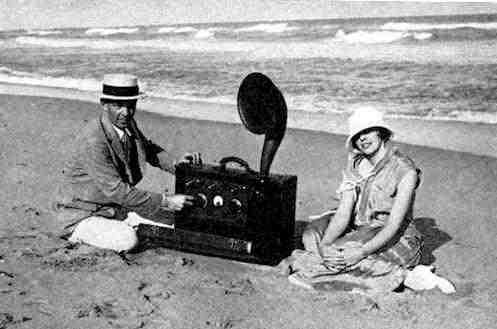
In his Free Culture – How Big Media Uses Technology and the Law to Lock Down Culture and Control Creativity book, Lawrence Lessig mentioned how Edwin Howard Armstrong was “one of America’s forgotten inventor geniuses” (p. 9) but that “his work in the area of radio technology was perhaps the most important of any single inventor in the first fifty years of radio.” Lessig attributed this “unknownness” of Armstrong to heavy-handed corporations and the government’s tendency to be “subject to capture” by corporate interests—where the corporation was publicly hailed in media over the celebration of the inventor in this case because the government regulations were aligned with corporate greed (p. 11). I think Lessig was also making the case that the creative genius of Armstrong was broken by the strain of the litigation. One of Armstrong’s friends estimated that Armstrong was spending about 90% of his time defending his patents and fighting lawsuits at the time of his death.
I was saddened by the story that Lessig told about the demise of Armstrong who eventually committed suicide, feeling hopeless after spending years of his life in fighting for the rights to his creativity. Armstrong had been challenged by the corporate giant RCA, who was headed by his friend David Sarnoff. Ironically, Armstrong had married Sarnoff’s secretary years earlier, as Sarnoff was working his way up the ranks of RCA.
What was left out by Lessig, was a successful ending to Amstrong’s story, made possible by the dedicated work of Sarnoff’s former secretary, Esther Marion. I further investigated the developments of Armstrong and found that after his death, Armstrong’s widow Esther Marion Armstrong continued to fight his lawsuits for thirteen years and won every lawsuit regarding her husband’s patents. She was compensated more than a million dollars in reparations. She formally—and legally—brought back Armstrong as the inventor of FM as she made cases “against other companies that were found guilty of infringement.” These companies included Motorola, RCA and Zenith.
Armstrong’s creativity was given the recognition he deserves, thanks to the work of his wife, Esther Marion, who honored his legacy by her fight for the resolution of the patents in his name and the creation of the Armstrong Memorial Research Foundation.
I was happy to find out this information as I looked further into the story of Armstrong and I celebrate his wife, Esther Marion, for setting the record straight. I hail her as a genius in her own right, as a champion for the rightful recognition of those who are the creators.
I also looked into David Sarnoff’s legacy and discovered that in Wikipedia, the only mention of Armstrong crossing Sarnoff’s path was that Sarnoff was “permitted and observed Edwin Armstrong’s demonstration of his regenerative receiver at the Marconi station at Belmar, New Jersey.”
REFERENCES
Lessig, L. (2004). “Free Culture.”
https://www.wikiwand.com/en/Edwin_Howard_Armstrong
